 W
WBorneo is the third-largest island in the world and the largest in Asia. At the geographic centre of Maritime Southeast Asia, in relation to major Indonesian islands, it is located north of Java, west of Sulawesi, and east of Sumatra.
 W
WThe Bornean Sun Bear Conservation Centre is a wildlife conservation and research centre for improving animal welfare and rehabilitation of the Malayan sun bear. It also aims to raise public awareness about the plight of the sun bears and to raise conservation awareness about this species.
 W
WBorneo traditional tattooing is a hand tapping style of tattooing with two sticks, developed by some of the ancient tribes of Borneo.
 W
WThe Borneo lowland rain forests is an ecoregion, within the tropical and subtropical moist broadleaf forests biome, of the large island of Borneo in Southeast Asia. It supports approximately 15,000 plant species, 380 bird species and several mammal species. The Borneo lowland rain forests is diminishing due to logging, hunting and conversion to commercial land use.
 W
WThe Borneo montane rain forests are an ecoregion, of cloud forest, within the tropical and subtropical moist broadleaf forests biome, of the island of Borneo in Southeast Asia.
 W
WThe Borneo Orangutan Survival (BOS) Foundation is an Indonesian non-profit NGO founded by Dr Willie Smits in 1991 and dedicated to the conservation of the endangered Bornean orangutan and its habitat through the involvement of local people. It is audited by a multinational auditor company and operates under the formal agreement with the Indonesian Ministry of Forest to conserve and rehabilitate orangutans. BOS manages orangutan rescue, rehabilitation and re-introduction programmes in East and Central Kalimantan. With more than 500 orangutans in its care and employing between six hundred and a thousand people at a hundred sites BOS is the biggest primate conservation NGO worldwide. Nyaru Menteng and Samboja Lestari are the BOS sites that have received most extensive media coverage. Nyaru Menteng, founded by Lone Drøscher Nielsen, has been the subject of a number of TV series, including Orangutan Diary and Orangutan Island.
 W
WThe Borneo peat swamp forests ecoregion, within the tropical and subtropical moist broadleaf forests biome, are on the island of Borneo, which is divided between Brunei, Indonesia and Malaysia.
 W
WNorth Borneo was a British protectorate located in the northern part of the island of Borneo. The territory of North Borneo was originally established by concessions of the Sultanates of Brunei and Sulu in 1877 and 1878 to a German-born representative of Austria-Hungary, a businessman and diplomat, von Overbeck.
 W
WBrunei, officially the Nation of Brunei, the Abode of Peace, is a country located on the north coast of the island of Borneo in Southeast Asia. Apart from its coastline with the South China Sea, the country is completely surrounded by the insular Malaysian state of Sarawak. It is separated into two parts by the Sarawak district of Limbang. Brunei is the only sovereign state completely on the island of Borneo; the remainder of the island's territory is divided between the nations of Malaysia and Indonesia. Brunei's population was 428,963 in 2018. The government is an absolute monarchy under the Sultan, which implements a combination of English common law and sharia law, as well as direct general Islamic practices.
 W
WWilliam Clark Cowie was a Scottish engineer, mariner, and businessman who helped establish British North Borneo and was Chairman of the British North Borneo Company.
 W
WDanum Valley Conservation Area is a 438 square kilometres tract of relatively undisturbed lowland dipterocarp forest in Sabah, Malaysia. It has an extensive diversity of tropical flora and fauna, including such species as the rare Bornean orangutans, gibbons, mousedeer, clouded leopards and over 270 bird species. Activities offered are jungle treks, river swimming, bird watching, night jungle tours and excursions to nearby logging sites and timber mills.
 W
WDeforestation in Borneo has taken place on an industrial scale since the 1960s. Borneo, the third largest island in the world, divided between Indonesia, Malaysia and Brunei, was once covered by dense tropical and subtropical rainforests.
 W
WThe Disenchanted Forest is a 1999 documentary film that follows endangered orphan orangutans on the island of Borneo as they are rehabilitated and returned to their rainforest home. It centres on the three main Borneo Orangutan Survival Foundation (BOS) projects - Wanariset, Nyaru Menteng and Mawas. It is narrated by Brooke Shields.
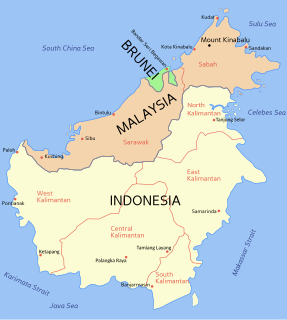 W
WEast Malaysia, also known as Sabah, Sarawak and Labuan or Malaysian Borneo, is the part of Malaysia on the island of Borneo, the world's third largest island. It consists of the Malaysian states of Sabah, which is closer to the Philippines than to mainland Malaysia, Sarawak in the west, and the Federal Territory of Labuan. Labuan is an island in its small archipelago of the same name due north of Brunei; its closest land mass is with Sabah. It lies to the east of Peninsular Malaysia, the part of the country on the Malay Peninsula. The two are separated by the South China Sea.
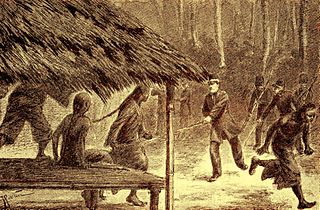 W
WThe expedition against the Chinese in Montrado (1854–1855) was a punitive expedition of the Royal Netherlands Indies Army against Chinese rebels in Montrado (Borneo).
 W
WThe base of rocks that underlie Borneo, an island in Southeast Asia, was formed by the arc-continent collisions, continent–continent collisions and subduction–accretion due to convergence between the Asian, India–Australia, and Philippine Sea-Pacific plates over the last 400 million years. The active geological processes of Borneo are mild as all of the volcanoes are extinct. The geological forces shaping SE Asia today are from three plate boundaries: the collisional zone in Sulawesi southeast of Borneo, the Java-Sumatra subduction boundary and the India-Eurasia continental collision.
 W
WThomas Bradley Harris was an American businessman and co-founder of the American colony of "Ellena" together with Joseph William Torrey on the island of Borneo.
 W
WThe Heart of Borneo is a conservation agreement initiated by the World Wide Fund for Nature to protect a 220,000 km² forested region on Borneo island that is known as Asia's last great rainforest. The agreement has been signed by the governments of Brunei, Indonesia and Malaysia in Bali on 12 February 2007 to support the initiative. The region provides habitat to 10 endemic species of primate, more than 350 birds, 150 reptiles and amphibians and 10,000 plants. From 2007 to 2010 a total of 123 new species have been recorded in the region. A status report from 2012 found that the lowland rain forest within the area is deteriorating and under threat. The Bornean rhinoceros was the most threatened fauna, with an estimated 25 individuals remaining. As of 2015, they are extinct in the wild with only 3 individuals remaining in captivity in Sabah.
 W
WThe history of Sabah can be traced back to about 23–30,000 years ago when evidence suggests the earliest human settlement in the region existed. The history is interwoven with the history of Brunei and the history of Malaysia, which Sabah was previously part of and is currently part of respectively. The earliest recorded history of Sabah being part of any organised civilisation began in the early 15th century during the thriving era of the Sultanate of Brunei. Prior to this, early inhabitants of the land lived in predominantly tribal societies, although such tribal societies had continued to exist until the 1900s. The eastern part of Sabah was ceded to the Sultan of Sulu by the Sultan of Brunei in 1658 for the former helping a victory over Brunei enemies, but many sources stated it had not been ceded at all. By the late 19th century, both territories previously owned by Sultan of Brunei and Sultan of Sulu was granted to British syndicate and later emerged as British North Borneo under the management of the North Borneo Chartered Company. Sabah became a protectorate of the United Kingdom in 1888 and subsequently became a Crown colony from 1946 until 1963, during which time it was known as Crown Colony of North Borneo. On 16 September 1963, Sabah merged with Malaya, Sarawak and Singapore to form Malaysia.
 W
WHistory of Sarawak can be traced as far as 40,000 years ago paleolithic period where the earliest evidence of human settlements is found in the Niah caves. A series of Chinese ceramics dated from 8th to 13th century AD was uncovered at the archeological site of Santubong. The coastal regions of Sarawak came under the influence of the Bruneian Empire in the 16th century. In 1839, James Brooke, a British explorer, first arrived in Sarawak. Sarawak was later governed by the Brooke family between 1841 and 1946. During World War II, it was occupied by the Japanese for three years. After the war, the last White Rajah, Charles Vyner Brooke, ceded Sarawak to Britain, and in 1946 it became a British Crown Colony. On 22 July 1963, Sarawak was granted self-government by the British. Following this, it became one of the founding members of the Federation of Malaysia, established on 16 September 1963. However, the federation was opposed by Indonesia, and this led to the three-year Indonesia–Malaysia confrontation. From 1960 to 1990, Sarawak experienced a communist insurgency.
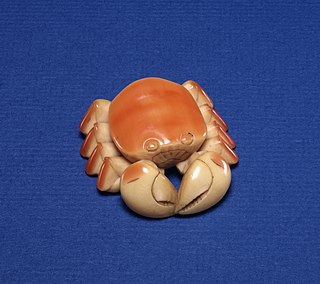 W
WHornbill ivory is a precious ornamental material derived from the helmeted hornbill, a large bird of the Malay Peninsula, Sumatra, and Borneo.
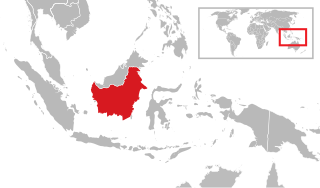 W
WKalimantan is the Indonesian portion of the island of Borneo. It comprises 73% of the island's area. The non-Indonesian parts of Borneo are Brunei and East Malaysia. In Indonesia, "Kalimantan" refers to the whole island of Borneo. In 2019, the Indonesian President Joko Widodo proposed that Indonesia's capital be moved to Kalimantan.
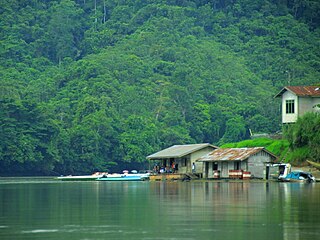 W
WKayan Mentarang National Park is a densely forested national park in North Kalimantan province, Borneo Island, Indonesia. The national park is named after a great dispersed Mentarang mountain trails plateau of Apau Kayan which covers the entire park from Datadian area in south region to Apau Ping area in mid region until Long Bawan in north region.
 W
WSundaland heath forest, also known as Kerangas forest, is a type of tropical moist forest found on the island of Borneo, which is divided between Brunei, Indonesia, and Malaysia, as well as on the Indonesian islands of Belitung and Bangka, which lie to the west of Borneo.
 W
WThe Kulamba Wildlife Reserve is situated in Sabah, Malaysia, and covers 204 km2 (79 sq mi). It is an area protected under state law and is particularly significant for the conservation of orangutans.
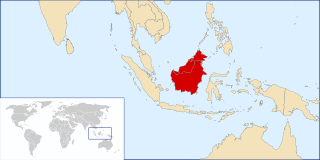 W
WThe Kutai sedimentary basin extends from the central highlands of Borneo, across the eastern coast of the island and into the Makassar Strait. With an area of 60,000 km2, and depths up to 15 km, the Kutai is the largest and deepest Tertiary age basin in Indonesia. Plate tectonic evolution in the Indonesian region of SE Asia has produced a diverse array of basins in the Cenozoic. The Kutai is an extensional basin in a general foreland setting. Its geologic evolution begins in the mid Eocene and involves phases of extension and rifting, thermal sag, and isostatic subsidence. Rapid, high volume, sedimentation related to uplift and inversion began in the Early Miocene. The different stages of Kutai basin evolution can be roughly correlated to regional and local tectonic events. It is also likely that regional climate, namely the onset of the equatorial ever wet monsoon in early Miocene, has affected the geologic evolution of Borneo and the Kutai basin through the present day. Basin fill is ongoing in the lower Kutai basin, as the modern Mahakam River delta progrades east across the continental shelf of Borneo.
 W
WLabuan, officially the Federal Territory of Labuan, is a Federal Territory of Malaysia. It is made up of the eponymous Labuan Island and six smaller islands, and is located off the coast of the state of Sabah in East Malaysia. Labuan's capital is Victoria and is best known as an offshore financial centre offering international financial and business services via Labuan IBFC since 1990 as well as being an offshore support hub for deepwater oil and gas activities in the region. It is also a tourist destination for people travelling through Sabah, nearby Bruneians and scuba divers. The name Labuan derives from the Malay word labuhan which means harbour.
 W
WThe Lamandau Nature Reserve is found in Borneo, Indonesia. This site has an area of 761 km2 (294 sq mi). It is home to a number of Bornean orangutans. It is this reserve that rehabilitates and orphan orangutans are released into by the Orangutan Foundation.
 W
WLanjak Entimau Wildlife Sanctuary is a 1,870 km2 (1,870 km2) large protected area on the island of Borneo in Sarawak, Malaysia. It is significant for orangutan conservation. Together with Batang Ai National Park these protected areas host an estimated 1,400 orangutans. Hunting and illegal logging are only minor problems in these areas, but could become serious if not monitored, especially because the areas are contiguous with Indonesia, where illegal logging is rampant.
 W
WLong Mio is one of the villages located in the district of Sipitang, Sabah. Majority of the inhabitants are of Lun Bawang/Lun Dayeh ethnic group.
 W
WMountain Kinabalu is a mountain located in Ranau district, West Coast Division of Sabah, Malaysia. It is protected as Kinabalu Park, a World Heritage Site. Kinabalu is the highest peak in Borneo's Crocker Range, the Malay Archipelago, and Malaysia. Mount Kinabalu is also the 20th most prominent mountain in the world by topographic prominence.
 W
W W
WThe Governor of North Borneo was the appointed head of the government of North Borneo.
 W
WParang Chandong is a traditional chopper used by the Dayak people of the Baram River in Borneo.
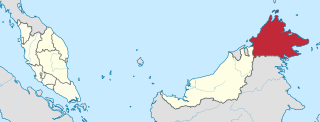 W
WSabah is a state of Malaysia located on the northern portion of Borneo. Sabah has land borders with the Malaysian state of Sarawak to the southwest and Indonesia's Kalimantan region to the south. The Federal Territory of Labuan is an island just off the Sabah coast. Sabah shares maritime borders with Vietnam to the west and the Philippines to the north and east. Kota Kinabalu is the state capital city, the economic centre of the state and the seat of the Sabah state government. Other major towns in Sabah include Sandakan and Tawau. As of the 2015 census in Malaysia, the state's population is 3,543,500. Sabah has an equatorial climate with tropical rainforests and abundant animal and plant species. The state has long mountain ranges on the west side which form part of the Crocker Range National Park. Kinabatangan River, second longest river in Malaysia runs through Sabah and Mount Kinabalu is the highest point of Sabah as well as of Malaysia.
 W
WSamboja Lestari is a private zoo and area of restored tropical rainforest near the city of Balikpapan in East Kalimantan, Borneo, Indonesia, owned by the Borneo Orangutan Survival Foundation (BOS) led by Willie Smits, with the aim of rehabilitating Bornean orangutans. According to Smits, Samboja Lestari uses the principles of People, Planet, Profit, attempting to provide incomes for local people using conservation. It is located about 38 kilometres from East Kalimantan's biggest city, Balikpapan.
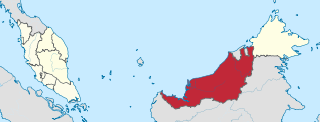 W
WSarawak is a state of Malaysia. The largest among the 13 states, with an area almost equal to that of Peninsular Malaysia, Sarawak is located in northwest Borneo Island, and is bordered by the Malaysian state of Sabah to the northeast, Kalimantan to the south, and Brunei in the north. The capital city, Kuching, is the largest city in Sarawak, the economic centre of the state, and the seat of the Sarawak state government. Other cities and towns in Sarawak include Miri, Sibu, and Bintulu. As of the 2015 census, the population of Sarawak was 2,636,000. Sarawak has an equatorial climate with tropical rainforests and abundant animal and plant species. It has several prominent cave systems at Gunung Mulu National Park. Rajang River is the longest river in Malaysia; Bakun Dam, one of the largest dams in Southeast Asia, is located on one of its tributaries, the Balui River. Mount Murud is the highest point in Sarawak.
 W
WSarawak Report is an investigative journalism online news resource operated from London since 2010 by Clare Rewcastle Brown, sister-in-law of the former British prime minister Gordon Brown. The website reported on the welfare of the indigenous people in Sarawak followed by exposés on corruption scandals in Sarawak and Malaysia in general. The website was blocked by the Barisan Nasional led government from 2015 to 2018 due its reporting on the 1Malaysia Development Berhad (1MDB) scandal. After 2018 Malaysian general election, the new Pakatan Harapan led government unblocked the website.
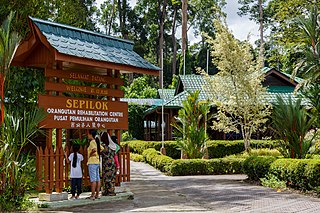 W
WSepilok Orangutan Rehabilitation Centre is located about 25 kilometres west of Sandakan in the state of Sabah, Malaysia.
 W
WThe Silabukan Protection Forest Reserve is located in Sabah, Malaysia. It was established in 1992. This site is 114 km2 (44 sq mi). Although 8% of Sabah's land area is included in the system of national parks, most of Sabah's orangutans do not occur in official protected areas, they are instead found in production forest landscapes in the eastern Sabah Foundation concession, which includes Silabukan Forest Reserve.
 W
WStone laterite Borneo is a stone resembling hardened soil from the deposition of substances such as nickel and iron. Laterite itself naturally formed therein contained many elements and substances that make up the nutrients of the soil layer hardens like a rock. Long ago laterite stone often used as materials for laterite bricks because when moist easily cut, but once exposed to air for a long time will harden like stone.
 W
WThe Tomb of the King of Boni is the tomb of Abdul Majid Hassan, the ruler of Boni, a medieval state on the island of Borneo sometimes considered to be the predecessor of modern Brunei. It and its associated statuary are located in a park at the southern foothills of Tortoise Mountain (Guishan), about 3 km south of the southern gate of the walled city of Nanjing.
 W
WCol. Joseph William Torrey, Rajah of Ambong and Marudu, was an American merchant, president of the American Trading Company of Borneo and co-founder of the American colony "Ellena" together with Thomas Bradley Harris on the island of Borneo. He was known as "Yankee Rajah" and served as a U.S. vice-consul to Siam.
 W
WA village is the third and lowest administrative division of Brunei. It is headed by a village head. Villages are subdivisions of the subdistricts of Brunei. A village may have a population ranging from a few hundreds to less than ten thousand people.